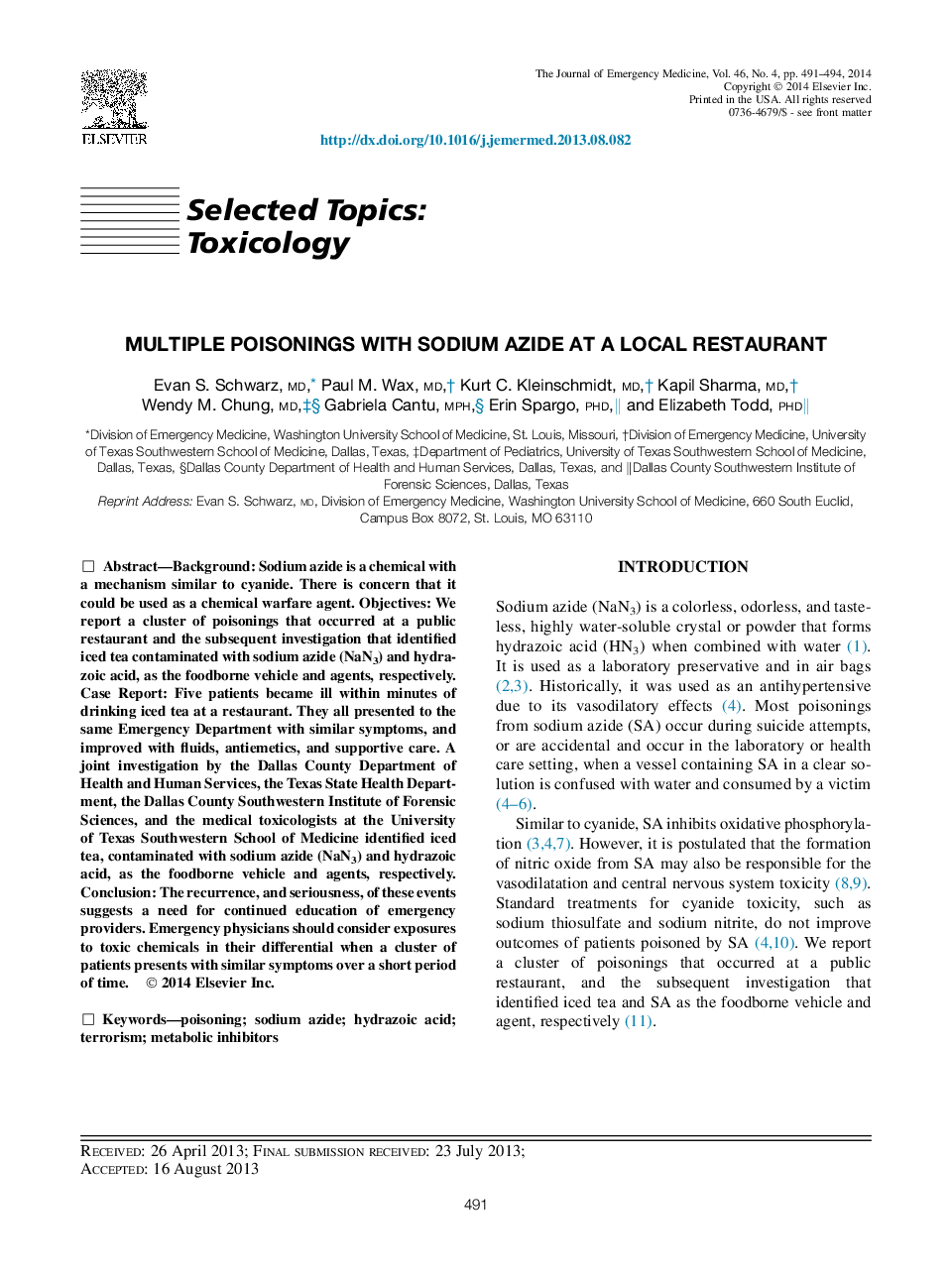| Article ID | Journal | Published Year | Pages | File Type |
|---|---|---|---|---|
| 3247409 | The Journal of Emergency Medicine | 2014 | 4 Pages |
BackgroundSodium azide is a chemical with a mechanism similar to cyanide. There is concern that it could be used as a chemical warfare agent.ObjectivesWe report a cluster of poisonings that occurred at a public restaurant and the subsequent investigation that identified iced tea contaminated with sodium azide (NaN3) and hydrazoic acid, as the foodborne vehicle and agents, respectively.Case ReportFive patients became ill within minutes of drinking iced tea at a restaurant. They all presented to the same Emergency Department with similar symptoms, and improved with fluids, antiemetics, and supportive care. A joint investigation by the Dallas County Department of Health and Human Services, the Texas State Health Department, the Dallas County Southwestern Institute of Forensic Sciences, and the medical toxicologists at the University of Texas Southwestern School of Medicine identified iced tea, contaminated with sodium azide (NaN3) and hydrazoic acid, as the foodborne vehicle and agents, respectively.ConclusionThe recurrence, and seriousness, of these events suggests a need for continued education of emergency providers. Emergency physicians should consider exposures to toxic chemicals in their differential when a cluster of patients presents with similar symptoms over a short period of time.
